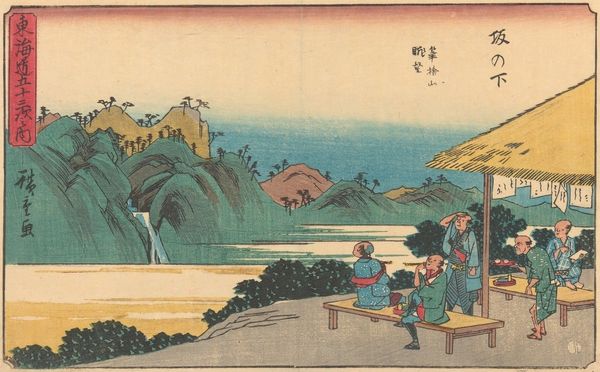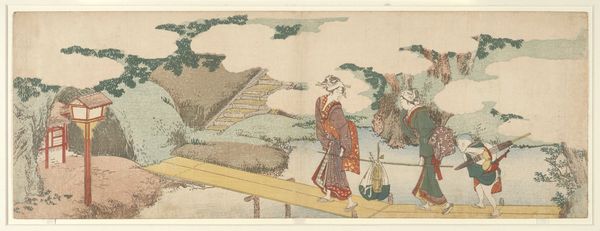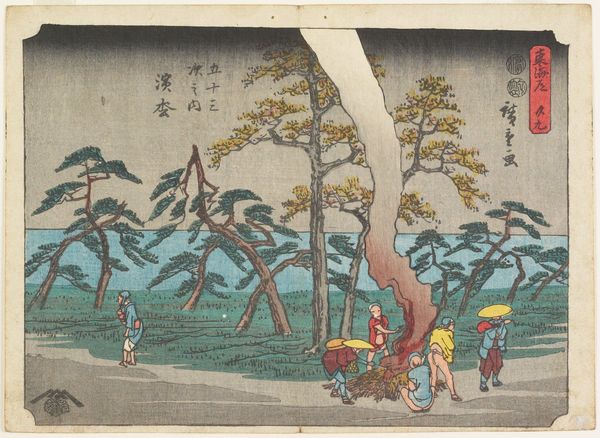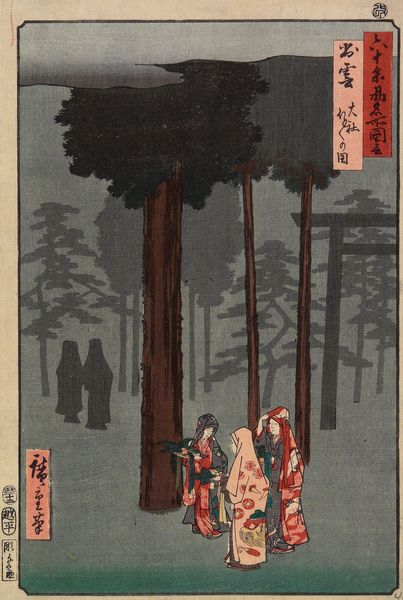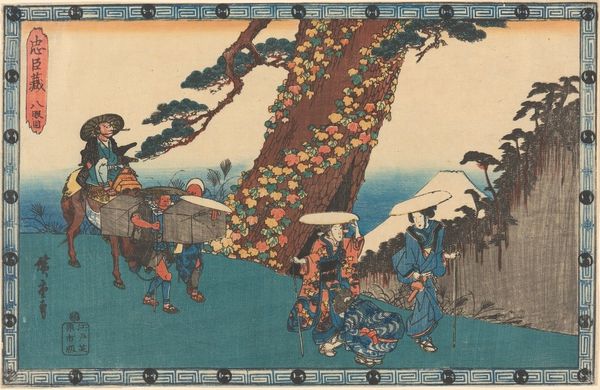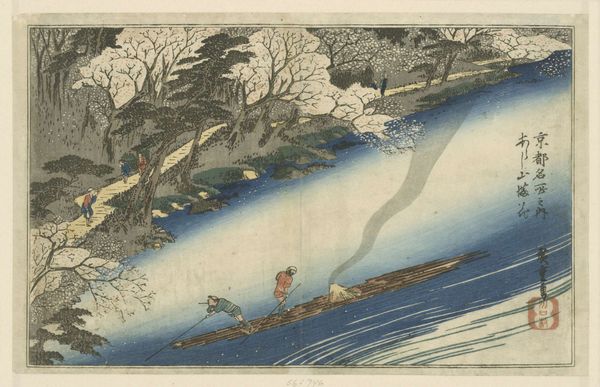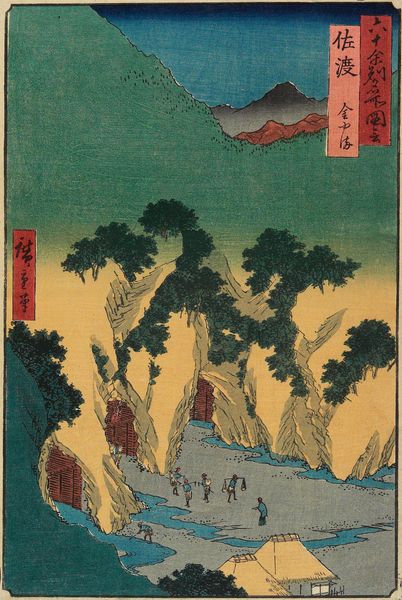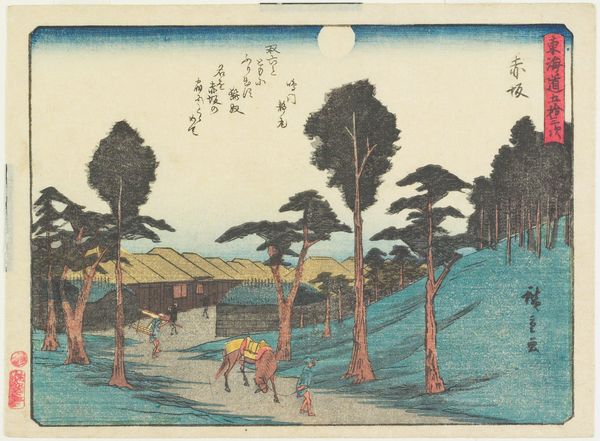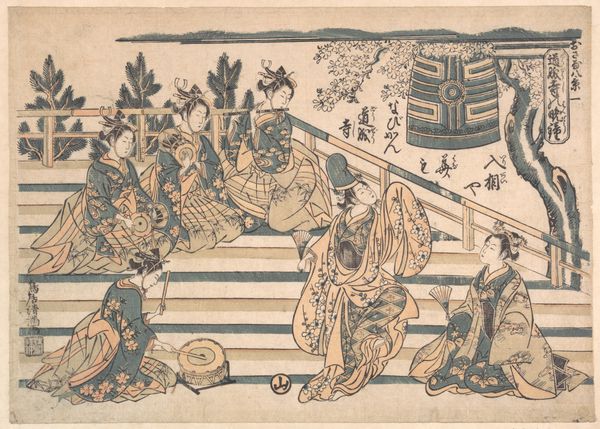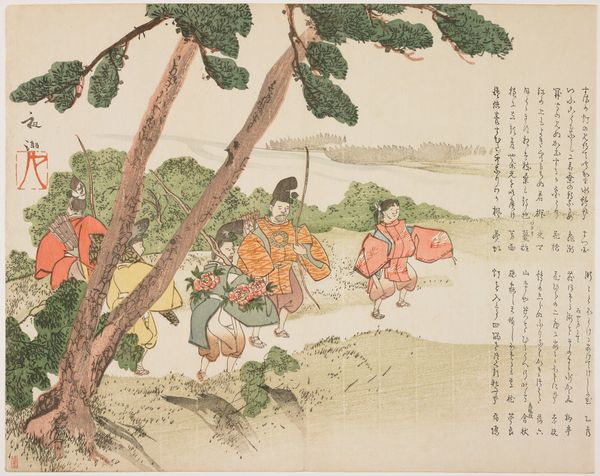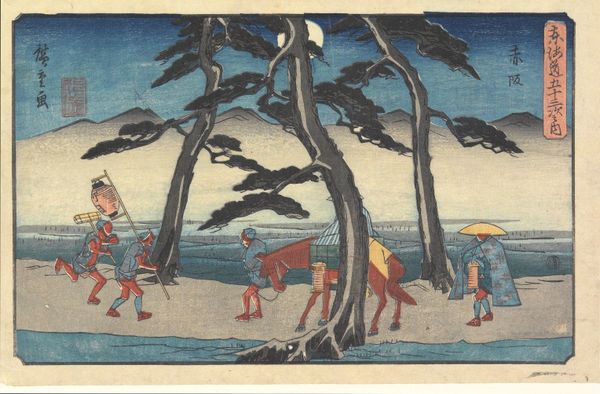
Part 2- At Sōjō-ga-tani on Kurama Mountain c. 1832 - 1834
0:00
0:00
print, ink, woodcut
#
narrative-art
# print
#
asian-art
#
landscape
#
ukiyo-e
#
figuration
#
ink
#
woodcut
Dimensions: 8 7/8 × 13 3/4 in. (22.6 × 35 cm) (image, horizontal ōban)
Copyright: Public Domain
Curator: Looking at this woodblock print by Utagawa Hiroshige, created around 1832 to 1834, titled "Part 2- At Sōjō-ga-tani on Kurama Mountain", now housed at the Minneapolis Institute of Art, what immediately strikes you? Editor: The overwhelming darkness, actually. It's not a comforting forest scene, but rather quite theatrical and ominous. The waterfall and figures seem almost staged, the woodcut has a lot of depth for this format, which is interesting in and of itself. Curator: Absolutely. Hiroshige masterfully used the woodcut technique to portray this narrative scene. Thinking about the materiality – the paper, ink, and the carving of the woodblocks – it speaks volumes about the production and dissemination of images during that era. Woodcuts like these were relatively accessible, making art and stories more available to the general populace. Editor: And those stories often reinforce specific social hierarchies, right? Consider the figures in this print – are they identifiable? Are they engaging with specific socio-political events of their time? The title mentions Kurama Mountain. What would that space have meant culturally? How does the image play with the cultural memory? Curator: Well, Kurama Mountain has significant cultural weight, often associated with esoteric Buddhism and yamabushi ascetics. We know Ukiyo-e prints catered to a burgeoning merchant class. And I do wonder about the labour of creation, how the artist employed skilled artisans. There’s often a delicate interplay between individual artistic expression and collective craftsmanship in such prints. It makes the production and reproduction into quite complex material practices. Editor: True, thinking about distribution, these prints were commodities circulated within specific networks. But, even in their consumption, the prints had specific social and ideological functions. They might depict narratives that reinforce authority or imagine subversive alternatives. The darkness in this print and the theatrical staging feels incredibly relevant for what prints might communicate as social scripts. Curator: So you’re saying the medium is not just a vehicle for imagery but is actively participating in defining cultural perceptions? Editor: Precisely. That shadowy forest isn't just a setting, but perhaps a commentary on the societal tensions of the time, viewed from the vantage point of printmaking culture. Curator: Indeed. It is amazing to see that even through an analytical dissection of material production we can still derive such insight and meaning! Editor: Likewise, investigating a medium in social and cultural terms, can grant insights into its means of production.
Comments
No comments
Be the first to comment and join the conversation on the ultimate creative platform.
